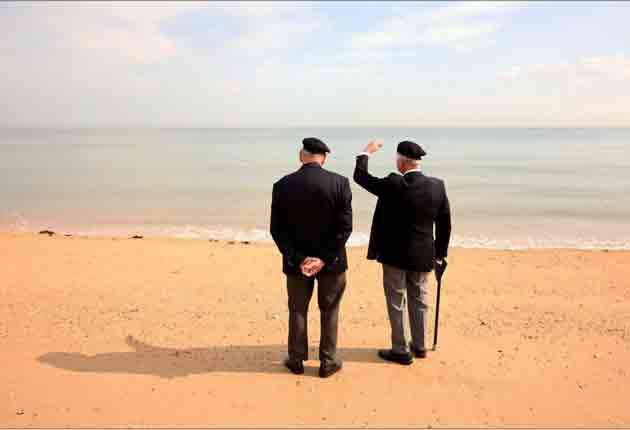We'll fight the wind farms off the D-Day beaches...

Your support helps us to tell the story
From reproductive rights to climate change to Big Tech, The Independent is on the ground when the story is developing. Whether it's investigating the financials of Elon Musk's pro-Trump PAC or producing our latest documentary, 'The A Word', which shines a light on the American women fighting for reproductive rights, we know how important it is to parse out the facts from the messaging.
At such a critical moment in US history, we need reporters on the ground. Your donation allows us to keep sending journalists to speak to both sides of the story.
The Independent is trusted by Americans across the entire political spectrum. And unlike many other quality news outlets, we choose not to lock Americans out of our reporting and analysis with paywalls. We believe quality journalism should be available to everyone, paid for by those who can afford it.
Your support makes all the difference.The view from the Normandy landing beaches is to be transformed – critics say "desecrated" – by an immense offshore wind farm.
French President Nicolas Sarkozy announced this week that one of the most poignant sea and beachscapes in the world – the Calvados coast, between Juno and Omaha beaches – had been selected as the site for one of five vast wind farms to be built off the French Atlantic seaboard from 2015.
Officials insist the generators, two-thirds the height of the Eiffel Tower, will only just be visible from the coast. But the leader of an official commemorative association and a militant ecologists' group said yesterday that France was failing in its duty to preserve the memory of D-Day, and the "essential character" of the five landing beaches on which 2,500 allied soldiers died on 6 June 1944.
The choice of the site, 11 kilometres off Courseulles-sur-Mer (Juno Beach), was "inappropriate and incoherent", Admiral Christian Brac de la Perrière, the president of the Comité du Débarquement, the official French body for commemorating D-Day, said yesterday.
"The French government says it wants the whole stretch of the Norman coastline from Utah Beach to Sword Beach to be declared a Unesco world heritage site," he said . "At the same time, it wants to build these generators in the very centre of the landing areas of 1944."
Jacky Bonnemains, president of Robin des Bois (Robin Hood), a militant French ecological group, said: "I find it extraordinary no one in government grasps that this will change forever the character of a place of sacred memory. They just don't seem to care." In future, the seascape would be "desecrated" by rows of wind generators, he added.
"The promoters and the government say the generators will be hardly visible but this is not so," he said. "They will easily be visible on a clear day and they will generate light pollution at night." Mr Bonnemains, whose group opposes all offshore wind farms, said there was already fear about unexploded wartime munitions near two wind farms off the northern Norman coast. "The seabed in the approaches to the D-Day landing beaches must be carpeted with unexploded bombs," he said.
France has no large offshore wind farms and wants to catch up with Britain and Germany. President Sarkozy announced on Tuesday a €10bn plan to build five giant arrays of generators off France's western coast from 2015. The sites – two off the north Norman coast, one off the D-Day beaches and two off the Breton coast – will generate as much electricity as two nuclear power stations.
The precise location of the D-Day wind farm has yet to be decided. An initial 50, and then at least 80, windmills will be built in the waters "off Courseulles-sur-Mer" or a little farther to the west. This would put the wind farm off Juno Beach, the landing place for 21,000 Canadian and British troops in 1944; or Gold Beach, stormed by 25,000 British troops; or even, conceivably, in sight of Omaha Beach, the bloodiest of the five landing areas, which was finally captured by the Americans on the evening of 6 June.
The offshore generators would be 160 metres high. The official proposals say the "impact on the maritime landscape" seen from the coast would be "limited". Only 24 per cent of the sweep of the horizon would be affected, the proposals say. Seen from 11 kilometres away, a 160m-high wind generator is "equivalent to a 1.6cm tall object (roughly a matchstick) seen from a metre away". Critics say 80 "matchsticks" along the maritime horizon at the D-Day beaches would be highly intrusive. The local councils have welcome the D-Day wind farm which will, it is promised, bring thousand of jobs to the area. Laurent Beauvais, the Socialist president of Lower Normandy, "rejoiced" at the choice, and said the wind park would have "no impact on fishing or tourism".
Join our commenting forum
Join thought-provoking conversations, follow other Independent readers and see their replies
Comments